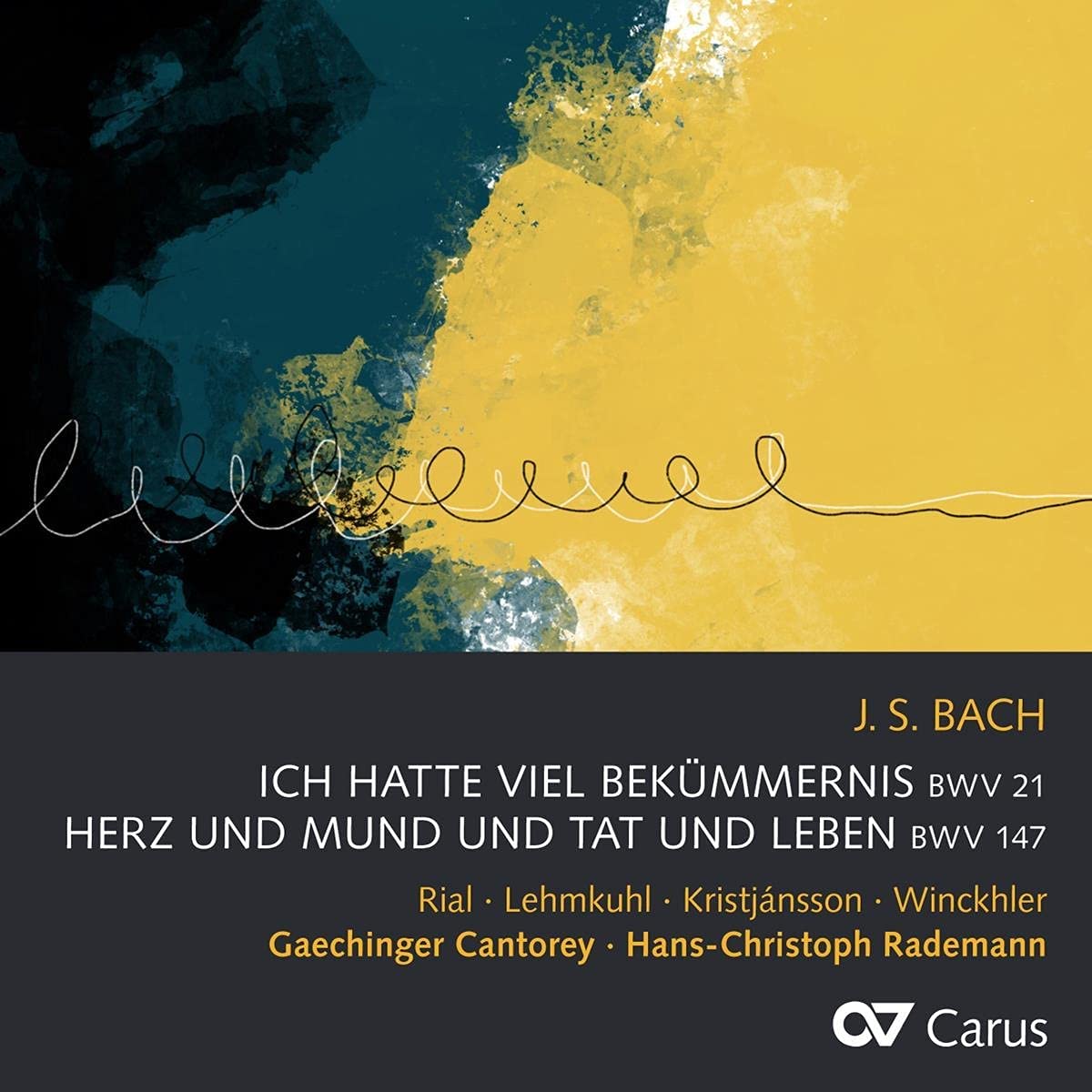Núria Rial, Wiebke Lehnkuhl, Benedikt Kristjánsson, Matthias Winckhler, Gaechinger Cantorey, Hans-Christoph Rademann
65:54
Carus 83.522
Click HERE to buy this recording on amazon.co.uk
[These sponsored links help the site remain alive and FREE!]
These two substantial cantatas are as good an introduction to Bach cantatas as you are likely to get, and they are presented in this CD published by Carus Verlag as an up-to-the-moment take on how to do the cantatas.
The pair is well-chosen: both are the results of the routine into which Bach’s new appointment at Leipzig threw him, and show the composer adapting compositions from the Weimar period to novel contexts. Both are substantial works in two parts. Ich hatte viel Bekümmernis (BWV 21) was probably originally composed as a test piece for a post in Halle in 1713, from which Bach later withdrew. He used it for the 3rd Sunday after Trinity in 1714, again for a trial in Hamburg in 1720 in D minor, presumably in Cammerton, and it was included in the first cantata cycle of 1723 on June 13th, reworked for C in – presumably – Cammerton. The original key in Weimar seems to have been C at Chorton, and by 1723 in Leipzig it was back in C, but at Cammerton, with four colla parte trombones in movement ix. It has everything: the division of the singers into soli and tutti, an opening sinfonia with a solo oboe, a soprano/bass duet between the soul and the vox Christi, illustrative writing, a recitative accompanied by two oboes da caccia, and a blazing finale with a choir of trumpets – a veritable showcase of styles and techniques.
Only a few weeks later Leipzig heard BWV 147, Herz und Mund und Tat und Leben, which was written originally for the fourth Sunday of Advent 1716 in Weimar, of which nothing survives except the opening chorus. For its re-use for the feast of the Visitation, 2nd July 1723, Bach retained Salomo Franck’s arias but composed three recitatives incorporating Marian allusions and the celebrated extended setting of the chorale we know as Jesu, joy of man’s desiring, repeated at the end of both parts. This extended chorale setting, where the lilting 9/8 melodic material of the ritornelli is derived from the chorale itself, is the first of such extended settings of final chorales which provide occasional, more elaborate alternatives to the plain four-part setting. Was it Dame Myra Hess, frequently playing a transcription for piano in her war-time concerts, who so popularised it among English speakers?
In general, the performances are fine: the tempi are good, the text is clear and the playing of a high quality, with 4.4.3.2.1 strings plus oboes, trumpets and a quartet of trombones. But there are two caveats: first, I found the tone of this harpsichord brittle and at times over-obtrusive; no details are given of any of the instruments played, and either the harpsichord was recorded too closely or the instrument was too jangly. Secondly and more importantly, Rademann persists in using a quartet of ‘soloists’ who take no further part in those chorus numbers in which they led off with the parts marked ‘solo’ once the parts are marked ‘tutti’ and doubled by instruments. Even if Rademann – like most German conductors – refuses to accept that these cantatas were sung with one voice to a part, plus ripieno singers on occasions, surely he must recognise that to start a chorus with single soloistic voices and then to silence them when tutti is marked in the score is nonsense. Some of solo voices – Nuria Rial and Benedikt Kristjánsson – would blend with other singers perfectly well, others – and particularly the contralto, Wiebke Lehmkuhl – would not. Her voice – rich and dark though it is – is peculiarly unsuited to Bach. This exposes the dilemma for conductors: if you can’t follow the logic of the scholarship as well as the musical plusses that says “Bach’s primary group of singers – the Concertisten – sing everything: add to them some ripienists if you like in choruses unless it specifically says ‘solo’’, then either choose soloists who will not stand out in the tutti like a sore thumb and make them sing everything, or get single voices from your ‘choir’ to do the incipits if you want different ‘soloists’ to sing the recits and arias.” But both on the grounds of scholarship and plain musicality, Rademann’s solution simply does not work.
This fairly major cavil apart, this would be a good CD to give someone who has no idea what a Bach Cantata is, and needs an introduction; but it will help perpetuate a now rather dated style of performance in which vocal timbres and ensemble skills have not kept pace with the strides taken in the past fifty years by wonderful period instrumental players.
David Stancliffe
